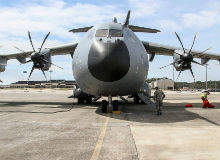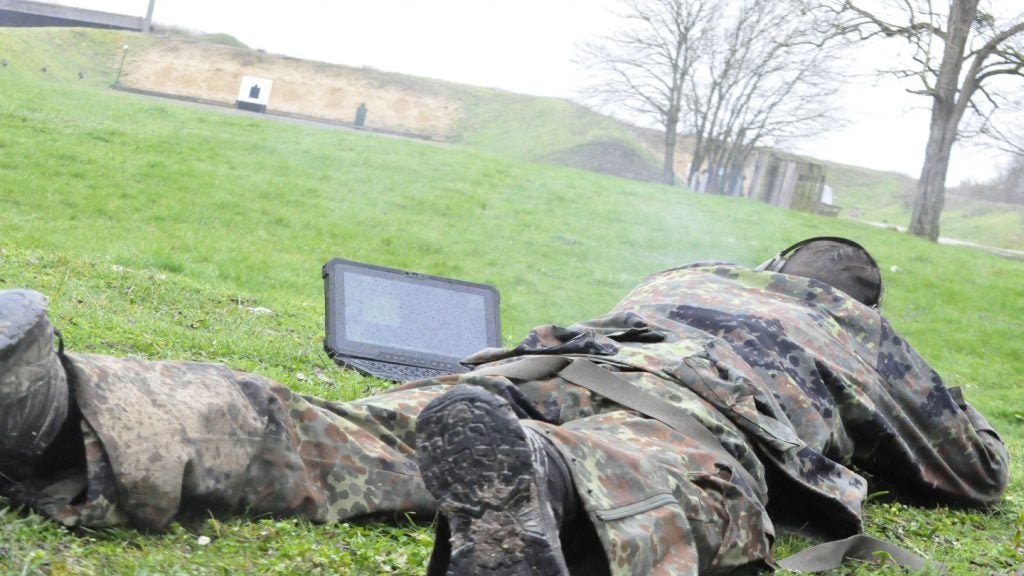

As a series of serious geo-political and economic challenges threaten to shake much of the solidarity that has underpinned common European thinking for decades, and some old divisions between member states reopen, it is clear that Europe faces a turbulent time. From the migrant crisis to the spectre of Brexit, the opposing drivers of European unity and national self-interest have once again become uneasy bedfellows – something which arguably is demonstrated nowhere more clearly than within the security and defence sector itself.
"Europe can no longer afford the inefficiencies of duplication and overcapacity that our existing fragmented market entails," a report from the European Commission cautioned back in the summer of 2015, highlighting the need to move away from the current focus on national markets. It comes as a timely warning; while some estimates suggest that Europe's military is paying up to 40% too much for some items, and has around 30% excess manufacturing capacity for others, according to the European Institute for Strategic Studies, EU defence spending overall has fallen by around 14% since 2007.
Over recent months there has been an increasing chorus of voices joining the EU policymakers in advocating the cause of consolidating Europe's fragmented and largely national-focussed arms market into a single European defence sector.
In July, the German government approved a strategy paper calling for, amongst other things, greater integration, particularly within individual member states, and at last November's Berlin Security Conference, Thomas Homberg, MD of MBDA Deutschland, Germany's leading missile systems manufacturer, went even further. For the European defence industry to survive in the face of growing global competition, he warned, greater co-operation and consolidation across the whole sector was "the only viable option."
See Also:
There seems to be widespread conviction that the writing is on the wall for carrying on with individual budgets, R&D programmes and procurement, and yet, as was evidenced by Chancellor Merkel's resounding "nein" to the proposed EADS/BAE Systems merger in 2012, national interests still hold considerable sway. However, there have been some developments since then.
How well do you really know your competitors?
Access the most comprehensive Company Profiles on the market, powered by GlobalData. Save hours of research. Gain competitive edge.

Thank you!
Your download email will arrive shortly
Not ready to buy yet? Download a free sample
We are confident about the unique quality of our Company Profiles. However, we want you to make the most beneficial decision for your business, so we offer a free sample that you can download by submitting the below form
By GlobalDataUniting vehicle systems
In January, Rheinmetall Defence announced moves to consolidate its extensive military vehicle production into a single new vehicle systems division, putting Rheinmetall Landsysteme (RLS) and Rheinmetall MAN Military Vehicles (RMMV) under joint management as the first part of the plan.
Uniting RLS and RMMV will yield a comprehensive 'one-stop' manufacturer of tracked and wheeled military vehicles and turret solutions, set to be one of Europe's leading single-source system suppliers with estimated annual sales of €1.4bn in the 2016 financial year. The combined portfolio now includes main battle tanks and armoured engineering vehicles, infantry fighting vehicles, trucks and turret solutions, providing the new united entity with a comprehensive range of products to meet all ground mobility needs.
Ultimately this new organisational structure will see Rheinmetall Defence consisting of three divisions – the new Vehicle Systems, as well as Electronic Solutions and Weapons and Ammunition – and while it is still effectively only a case of German subsidiaries uniting with themselves, it is a step in the right direction.
A more ambitious move, however, occurred last year with the Franco-German merger of Nexter and Krauss-Maffei Wegmann (KMW), to create what some, particularly in France, were calling a new 'Airbus for tanks.'
Just how successful they will prove in replicating Airbus' success in the long term remains to be seen; the market place for land systems is a crowded one and there are some big players in it. However, while there is no denying that the competition they face will be strong, Nexter, KMW and now to some extent, Rheinmetall too, is consciously becoming leaner and fitter in a bid to compete.
No "last supper"
Sixteen years on from the joint signing of a letter of intent by the big six of Europe's defence manufacturing nations to investigate a way to bring about industrial co-operation in the sector, it seems it may finally happen – but led by market forces rather than ideology.
Europe has never had the equivalent of the so-called 'Last Supper' – the meeting of US arms manufacturers called by the Secretary of Defence at the end of the Cold War which laid out the Pentagon's vision of the future, and kick-started an avalanche of mergers and acquisitions in the sector. The consolidation of the US defence industry was, at its core, driven by Washington; if there is to be similar restructuring in Europe few believe it will be driven from Brussels.
In her 2015 occasional paper 'Consolidation ahead: Europe's defense industry verges on a historic market-led transformation', Dr Christina Balis, leader of European operations for strategy and management consultant Avascent, argues that a fresh business rationale is shaping the future.
She says that it is easy to misread the collapse of the proposed EADS / BAE Systems merger along with the sector's other failed attempts at national and trans-national consolidation over the past decade, and so discount the possibility of transforming this industry in the way others have been in the face of similar problems.
"Today's industry leaders," she writes, "are responding to new commercial dynamics and market forces that will shape the €96bn sector's future."
Some of those forces can be seen to be behind Rheinmetall's recent move, which the company has said was driven by growing trends within the market for today's buyers to concentrate more on systems, than rather platforms. With large and highly complex modern procurement programmes placing burgeoning demands on the defence sector, Rheinmetall believes that its restructuring will enable it to perform more effectively in the global market, particularly against established foreign competition.
Old dog, new tricks
Even so, it is probably overly optimistic for the European arms sector as a whole to think that it can simply export itself out of its present woes. Achieving that will almost certainly require something much more fundamental – the abandonment of inherently nationalistic defence planning and procurement.
However, as the saying goes, it is hard to teach an old dog new tricks. Back in 2009, the European Commission adopted a new law designed to provide a level playing field for defence contracts, and stop the long-standing industrial nepotism shown to own-nation suppliers. While this should have made life easier, particularly for smaller players, and promoted co-operation between member states on procurement, in practice, according to the Commission, the law is not always being applied.
It is perhaps ironic to reflect that the European coal and steel community – the progenitor of the European Economic Community, and ultimately today's EU itself – was explicitly set up to establish a common market within Europe for the materials of war. It was a bold and visionary move at the time, but 65 years later, its expressly military goals have now fallen behind the rest of the thrust of European integration that it spawned. Defence acquisition still remains almost entirely nationally planned, ordered and delivered and so the sector remains fragmented.
No one – neither governments nor defence firms – really doubts the course that needs to be followed, nor the importance of embarking upon it. Having flirted with the idea of consolidation since the start of the century, Europe seems long overdue to make a definitive move.







Related Company Profiles
Rls
Avascent
Pentagon
BAE Systems Inc
Rheinmetall AG